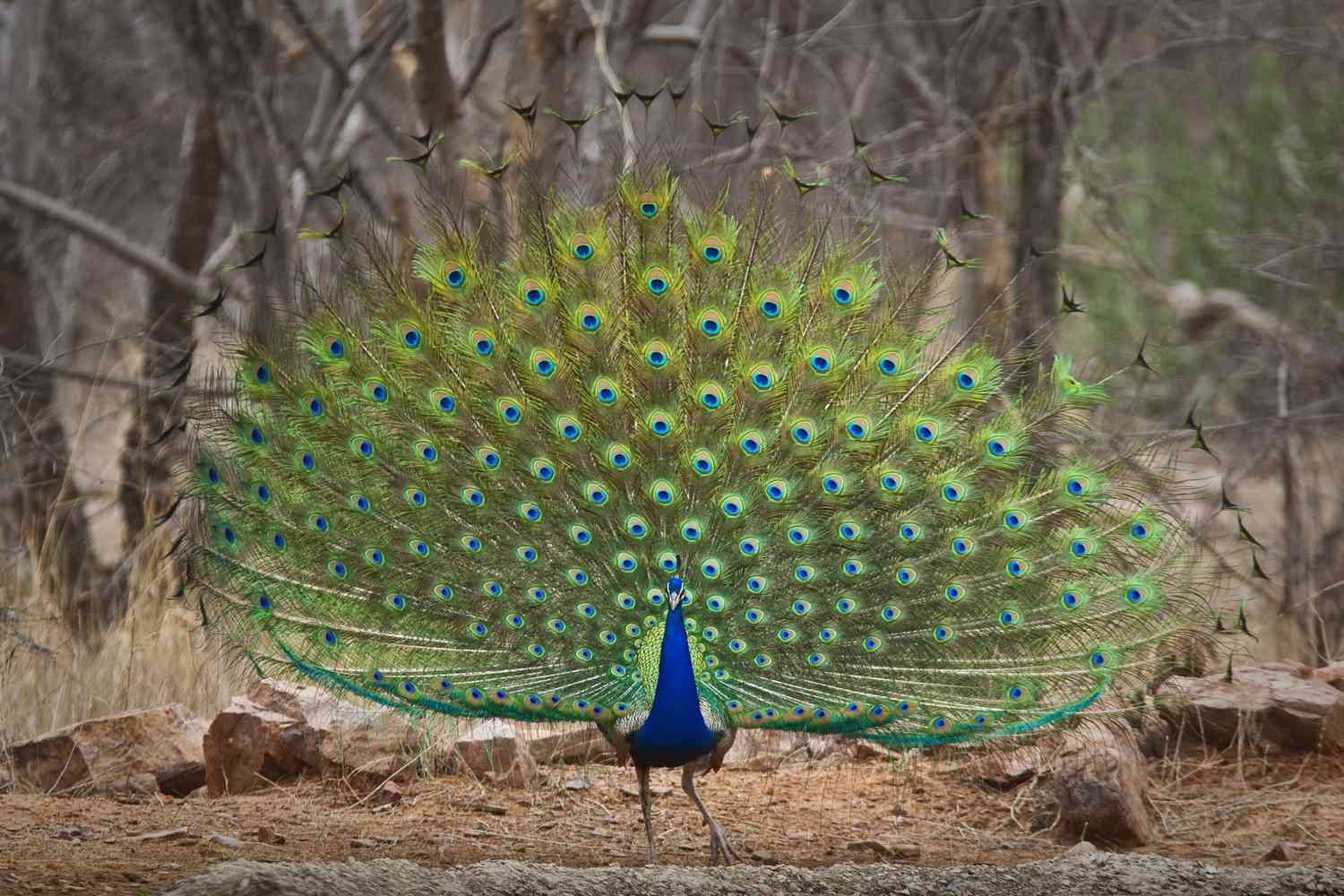
32 interesting facts about peacocks (peafowls)
- 👁️ 288
Peacocks, known for their stunning plumage and elegant display, are among the most recognizable and admired birds in the world. Belonging to the pheasant family, these birds have captivated human interest for centuries, symbolizing various cultural and spiritual values across different societies. Native to South Asia and parts of Africa, peacocks have been introduced to many other regions due to their popularity. The term “peacock” technically refers only to males; females are called “peahens,” and together, they are known as “peafowl.” Here are 32 interesting and informative facts about peacocks that delve into their biology, behavior, and the fascination they hold in human culture.
- The term “peacock” is commonly used to refer to both male and female birds, but correctly, the male is a peacock, and the female is a peahen.
- Peacocks are known for their colorful tail feathers or “train,” which can include over 200 individual feathers.
- The elaborate train is used in courtship rituals and mating displays, where the peacock fans out its feathers to attract a mate.
- The eye-catching spots on their tail feathers are known as “ocelli” and can shimmer in sunlight due to microscopic structures that reflect light.
- Peafowl are native to South Asia and parts of Africa, but they have been introduced to many other parts of the world.
- There are three main species of peafowl: the Indian peafowl (Pavo cristatus), the Green peafowl (Pavo muticus), and the Congo peafowl (Afropavo congensis).
- The Indian peafowl is the national bird of India.
- Peafowl can live up to 20 years in the wild and even longer in captivity.
- Despite their large and elaborate tail feathers, peacocks can fly, although they are not long-distance fliers.
- The diet of a peacock primarily consists of insects, plants, and small creatures, making them omnivores.
- The distinctive call of a peacock, often described as a loud and piercing cry, can be heard over a long distance.
- Peacocks shed their train feathers annually after the mating season, and new ones grow back.
- The green peafowl is considered endangered due to habitat loss and hunting.
- In many cultures, peacocks symbolize beauty, wealth, pride, and immortality.
- Peacocks have been kept as pets and ornamental birds in gardens and estates for centuries.
- The iridescent blue and green colors in a peacock’s feathers are due to a phenomenon called structural coloration, not pigments.
- Baby peafowl are called “peachicks” and do not have the colorful train until they mature.
- Male peafowl are among the largest flying birds in terms of the length and bulk of their plumage.
- The peacock’s train is not actually its tail; the tail is the shorter, stiff feathers that support the train.
- In addition to their visual display, peacocks can produce a variety of sounds to communicate.
- A group of peafowl is often referred to as a “bevy” or an “ostentation.”
- Peacocks have been a part of human culture and mythology for thousands of years, appearing in ancient Greek, Roman, and Hindu stories.
- The feathers of a peacock do not begin to show their famous iridescence until the bird is about 3 years old.
- Peafowl are capable of interbreeding, which can result in various hybrids with unique feather patterns.
- In the wild, peafowl are often found near water and in forested areas.
- The peacock’s elaborate display serves not only to attract mates but also to intimidate rivals and predators.
- The feathers of peacocks have been used in fashion and art for their beauty and symbolism.
- Peacocks can swivel each of their eyes independently, allowing them to be aware of their surroundings while displaying their feathers.
- The elaborate display of a peacock’s feathers is also used to make itself appear larger to potential predators.
- Charles Darwin discussed peacocks extensively in his work on sexual selection, a form of natural selection.
- Ancient belief systems often associated peacocks with the sun and renewal due to their vibrant colors and the annual regeneration of their feathers.
- Despite their prominence in many cultures for centuries, peafowl are not domesticated in the same way as chickens or ducks.
Peacocks remain one of nature’s most splendid creations, embodying the extravagance and complexity that can be produced by natural selection. Their vibrant colors, dramatic displays, and significant cultural presence make them a subject of admiration and fascination. Understanding peacocks not only enriches our appreciation for biodiversity but also for the cultural and symbolic meanings humans have attached to these magnificent birds throughout history. As symbols of beauty and pride, peacocks remind us of the wonder and diversity of the natural world.
Peacocks, known for their stunning plumage and elegant display, are among the most recognizable and admired birds in the world. Belonging to the pheasant family, these birds have captivated human interest for centuries, symbolizing various cultural and spiritual values across different societies. Native to South Asia and parts of Africa,…